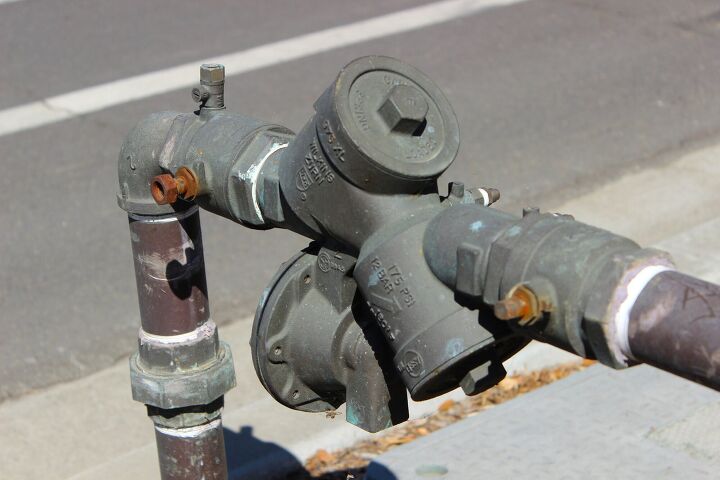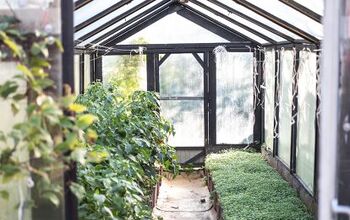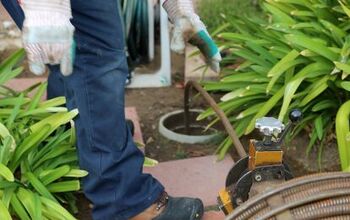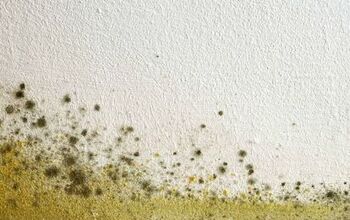How Much Does Backflow Testing Cost?

Whether you are aware or not, backflow can be a major problem that threatens the health and safety of you and all the members of your household. Because of this, it’s recommended that a backflow test be performed annually by a certified plumbing company. During the test, valves will be opened and closed to detect any irregularities in the prevention system. Then, a form is submitted to the local city to ensure there are no code violations and the preventer meets the proper standards.
The average cost of backflow testing is $200, and backflow testing prices include labor. Homeowners may have to spend $50 on a permit depending on local and state rules. It costs an average of $250 to install a new backflow preventer if the testing indicates that it is defective, and repairs cost $100.
Before we can dive into the specifics about how much backflow testing costs, you must first understand what backflow is, how it occurs, and also what a backflow preventer is and how it works. Continue reading for our comprehensive guide on backflow testing, so you can have a broader understanding of how to budget appropriately for this commonly overlooked household (or commercial) expense.
What is Backflow?
Backflow is a term in plumbing that refers to when water flows in the opposite direction through its projected system. When backflow happens, homeowners can have contaminated potable water, which puts themselves and their family members at risk. To prevent backflow from happening, building codes require a series of measures and backflow prevention devices.
When backflow occurs, the new, clean water becomes blended with dirty, used water. This leads to the pollution of your potable drinking source. Some tell-tale signs of backflow include noticeable changes in the taste, smell, and color of your water. When you take a closer look at backflow, elements that are supposed to be distributed away from your home may be mixed in, including:
- Fertilizers
- Human waste
- Pesticides
- Chlorine from pools/spas and other chemicals
- Shampoos, soaps, and other household cleansers from dishwasher/sinks/showers
Find out what a backflow tester is and how it works before you settle on a budget.
How Does Backflow Occur?
Your water supply line is intended to be a one-way delivery system that delivers fresh water to your home. However, sometimes, disruptions in pressure within the pipes can result in backflow, which contaminates clean water with waste and other toxic components. So, how does backflow occur? In general, backflow happens for one of two reasons:
- Back pressure: Your water’s flow can reverse when the plumbing’s pressure exceeds the pressure in the water distribution system. In other words, back pressure results from a higher pressure in the system than in its supply. This can occur in unvented heating systems, as thermal expansion increases pressure. Other pressurized systems like pumps, elevated tanks, and boilers that are designed to drive water to higher flowers can have backflow problems.
- Back siphonage: Back siphonage occurs when water pressure drops dramatically because of sudden overuse or withdrawal rate, which can also cause backflow issues. In other words, back siphonage usually happens when supply pressure is lowered below that of the rest of the system. This occur when a supply is interrupted or drained down. Back siphonage is a common occurrence during fire-fighting emergencies or other civic drainage jobs that necessitate excess water use in a short amount of time.
Fortunately, having a backflow preventer in your system can eliminate any risks for contamination.
What is a Backflow Preventer?
Backflow preventers do exactly what their name suggests: they prevent water from flowing in the reverse direction and ensure that it flows one-way – from the water main to your home’s pipes. Think of these devices as a one-way gate, or a traffic director that ensures everything follows the intended path. Whenever pressure changes, the backflow preventer will kick in and stop any risk of cross-contamination.
Having a backflow preventer installed is especially important for households operating on a well-water system, as the risk of contamination is higher. Though, many professionals recommend backflow preventers to all homeowners, since they offer an extra bit of peace of mind should any unexpected pressure shifts occur.
How Do Backflow Preventers Work?
Backflow preventers are relatively simple, yet ingenious, in terms of design. When water is sent through the mainline of your water system – like when you turn on the tap in your bathroom, flush your toilet, or start a load of laundry – the water is distributed through a branch line. During this process, whatever is in the line is brought with the water. When it comes to your irrigation system, for example, you may be using fertilizer, weed killer etc., to care for your lawn. Without a backflow preventer installed on the irrigation system’s cut-in, your water system can draw those harmful toxins into the water supply.
In addition to installing a backflow preventer, you can also prevent backflow by avoiding sinking garden hoses in spas, sinks, pools, tubs, and the like that contain harmful bacteria or hazardous chemicals. Or, using an air gap can prevent backflow. This means leaving empty space between any place where water may collect and the components that connect to your plumbing system, such as faucets and valves.
What is Backflow Testing?
Now that you understand what backflow is and how it’s prevented, backflow testing is the process that tests your plumbing system to ensure that your drinking water is not being contaminated with dirty water penetrating the water supply.
Your home’s water is typically kept at a standard pressure in order to allow water to move from one area of your home to another. If the pipes are exposed to a sudden drop in pressure from freezing, bursting, or an abnormally high demand on the water supply, contaminated water from the ground or storage may get into the system.
Why You Need Backflow Testing
While backflow prevention devices are incredibly helpful, they can still fail. Only some municipalities require yearly testing, but it’s still always recommended to have your backflow tested on an annual basis to avoid breakdowns. Backflow testing is an important component of your home’s maintenance routine, ensuring that you and your family are drinking and using water that is both safe and clean.
Without an annual backflow test, you may be completely unaware of any broken or worn-down parts in your backflow assembly. If a faulty backflow assembly goes unnoticed, contaminants will slowly enter the water supply and serious health concerns can arise. Having a professional perform a backflow test once a year will keep your mind at ease and all the members of your household safe.
Backflow Testing Process
Before a backflow test can be done, your licensed plumber has a couple of responsibilities. For starters, permission must be obtained from the owner or representative of the property that allows the water to be shut off. During testing, typically the water will need to be shut off for about 10 to 15 minutes per device. If a device being tested is on a fire line, the appropriate authorities must be notified of the shut-off and the fire system needs to be put on test mode.
Once all the necessary formalities are complete, the actual backflow test can begin. Generally speaking, there are two main purposes to this test: to see if backflow is present, and to determine the problem causing it so it can be fixed. The process involves using valves, known as gate and relief valves, on the backflow testing device. Your plumber will be closing valves and looking for changes in gauge movement, water leaks, or other signs of backflow.
During the backflow testing process, there is specific criteria that must be met:
- Verify that check valves prevent backflow.
- Verify that the air ports open when they should.
- Verify that the relief valves open before the pressure between check valves is lower than 2 PSL below the pressure at the inlet device.
If the test fails, your tester will submit a proposal to fix or replace the backflow device. After the device is fixed or replaced, it will be re-tested to check if it passes. Depending on the type of repair, the water will need to be shut off for a longer period of time. Once all the testing is done, your backflow preventer company will submit the forms to the city and/or water department to notify that the test has been completed. They will also send you a copy of the forms for your records.
What is Tested During a Backflow Test?
Each tester has a different method for testing, and there are some different things to look out for depending on where the backflow valve is attached – whether it’s a sprinkler system, water supply, or other potable water lines. Regardless, the main elements being tested during a backflow test are:
- Inspection of the valves and water lines to verify that everything is installed properly and up to code.
- One-way flow of water in the backflow prevention assembly, preventing contaminated potable water.
- No corrosion or leaks in the backflow prevention device.
- Testing reports are filed properly with the relevant city officials and public water system or water supplier.
How Much Does Backflow Testing Cost?
Backflow testing is a necessary, annual, expense that you need to properly budget for as a homeowner. Unfortunately, there isn’t really a one-size-fits-all price for backflow testing in the United States. Certified professionals will usually charge more than uncertified plumbers, but they usually won’t be able to make repairs or file certifications with the city.
With that said, backflow testing costs an average of $150 to $250. However, depending on a number of factors, you could pay as little as $20 or as much as $500 for a backflow test. The table below outlines a brief overview of the average costs of backflow testing.
| Average Cost Range | $150 to $250 |
| Low Cost Range | $20 to $150 |
| High Cost Range | $250 to $500 |
| Commercial Costs | $350 or more |
Factors that Influence Backflow Testing Price
Ultimately, there are several factors that influence the total price you can expect to pay for backflow testing. Although, the most common factors to look out for and ask your licensed plumber about include:
- Backflow prevention device repairs or replacement. If your backflow prevention device fails the test and needs to be repaired or replaced, this can increase the overall cost of the project. However, depending on who you hire for the test, they may not be able to handle the repairs. To keep costs as low as possible, make sure you hire a tester that can also perform any necessary repairs – should they be recommended.
- Retesting failed backflow devices after repairs. Performing additional testing after repairs are made to valves that fail the first test will result in extra costs.
- Additional cleaning fees because of flood water or mud. If your licensed plumber has to dig in order to get to the valve they’re testing, they most likely charge you an hourly fee for this additional work.
- City fees and certification. Some cities and water purveyors require both positive and negative tests be submitted for review, which can cost an additional fee. Most municipalities require any sort of backwater valve attached to a potable water supply be tested on an annual basis by a certified backflow tester.
How to Book a Backflow Test
Whether it’s a home or business, numerous state regulations require that a backflow test be completed on an annual basis. If it’s required in your area, you’ll receive a letter from the city with a backflow test report form about a month before it’s due. When you receive this letter, it’s a good time to contact a licensed plumber in your area.
Keep in mind that some, but not all, plumbers offer this service. Make sure that you choose a licensed backflow preventer company to perform the test and certify the results. The report must then be filled out and returned to the city that sent it.
How Long Does Backflow Testing Take?
The backflow testing process typically takes between 20 and 30 minutes to complete by a certified plumber. However, if repairs or replacement parts are needed, the process will take longer.
DIY vs. Professional Backflow Inspection
In some cities, you may be able to perform an annual backflow test yourself. However, in other cases, (like commercial buildings that have a potable drinking water system) you’ll likely need to hire a licensed backflow assembly tester for the inspection to look for any signs of contamination.
While testing the valve at home using a backflow inspection kit purchased online or from a local retailer will certainly save you money, it’s always worth it to hire a professional. That way, you can have peace of mind knowing that your water is clean and safe for the whole family. In fact, plumbers usually charge around $75 to $100 an hour to test a backflow prevention device, which is a relatively good deal to keep your water supply safe!
Related Questions
Are backflow valves required on residential properties?
Not all municipalities require backflow preventers or valves on residential properties. If you’re not sure if it’s required in your area, make sure you check with your local authority. You also may need to have a permit for the installation, which can cost between $0 and $50 depending on your location.
What is a backwater valve?
A backwater valve is a single valve that shuts itself when water tries to flow upstream on and into your property. This keeps the water in the system safe and clean. These valves are commonly used in garden hoses, basement drains, and other basic piping systems.They are not to be confused with backflow preventers, which are a combination of valves that prevent dirty and potentially toxic liquids from flowing into your home and property via the drains. Backflow preventers are commonly connected to irrigation systems and sewage pipes.
How much does it cost to install a backflow preventer?
Professional installation of a backflow preventer ranges from $100 to $400. Whereas, installing a preventer during initial construction costs between $100 and $250 and retrofitting an existing pipe costs from $150 to $400. Whether or not you decide to hire a professional, you’ll still have to pay an average of $50 for a permit (in addition to installation costs).
How much are backflow repairs?
Backflow repairs typically cost between $50 and $150, plus the cost of any replacement parts. Repair is often necessary if a single valve or component fails. If it breaks down any further, a full replacement may be required. The cost to replace a backflow device ranges from $150 to $500 on average.
How do I know if I need a backflow preventer system installed on my house?
In most cases, a backflow preventer is required if the homeowner has a well or an irrigation system, since both are at a high risk of contamination caused by backflow. While a backflow preventer may not be required everywhere, it’s recommended regardless of where you live.New homes usually have built-in backflow preventers on particular water lines. Though, in order to know for sure, you should have a licensed plumber come out to inspect your residential water system.
Related Articles

Jessica considers herself a home improvement and design enthusiast. She grew up surrounded by constant home improvement projects and owes most of what she knows to helping her dad renovate her childhood home. Being a Los Angeles resident, Jessica spends a lot of her time looking for her next DIY project and sharing her love for home design.
More by Jessica Stone



























